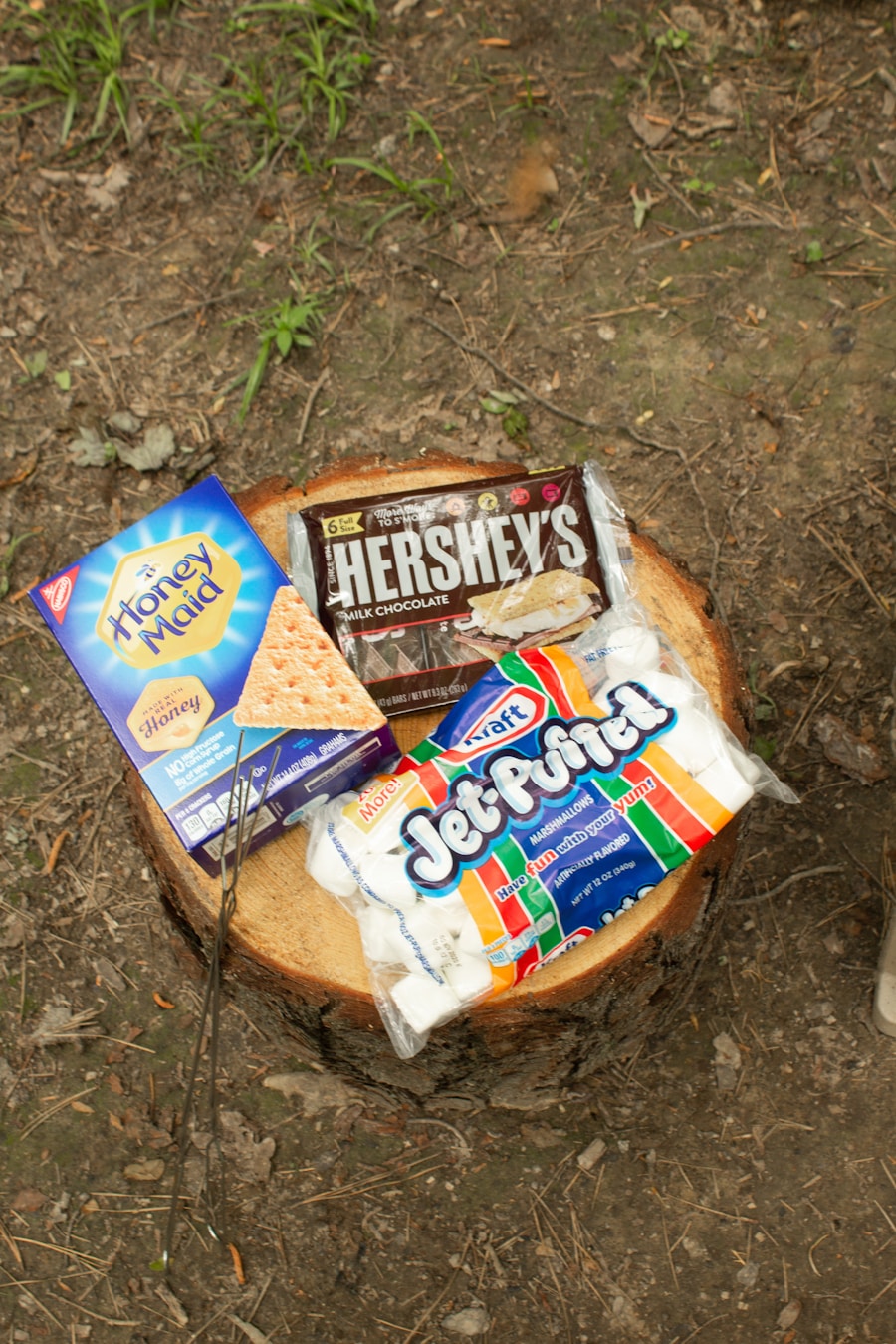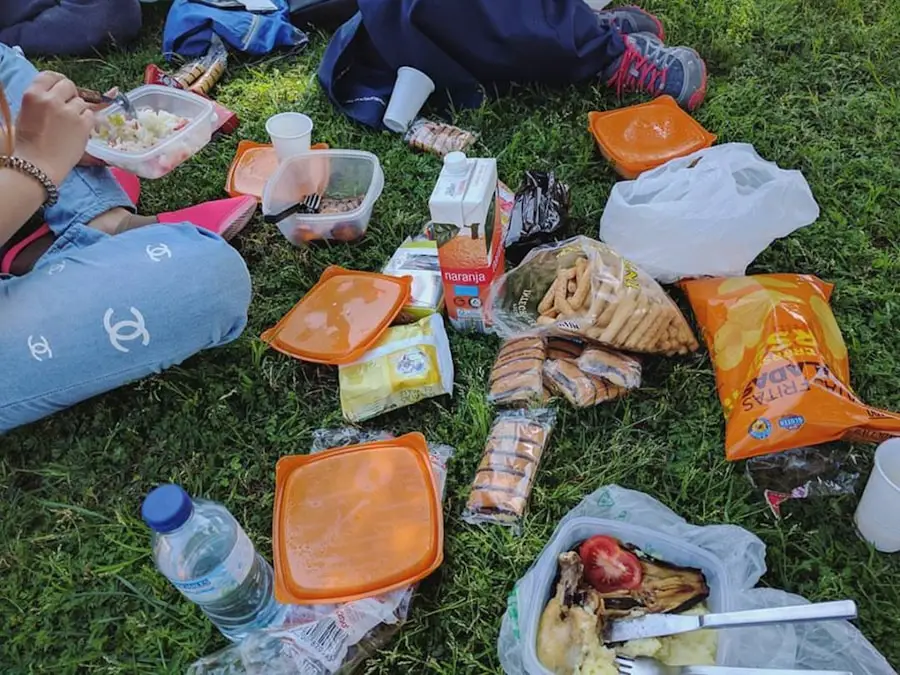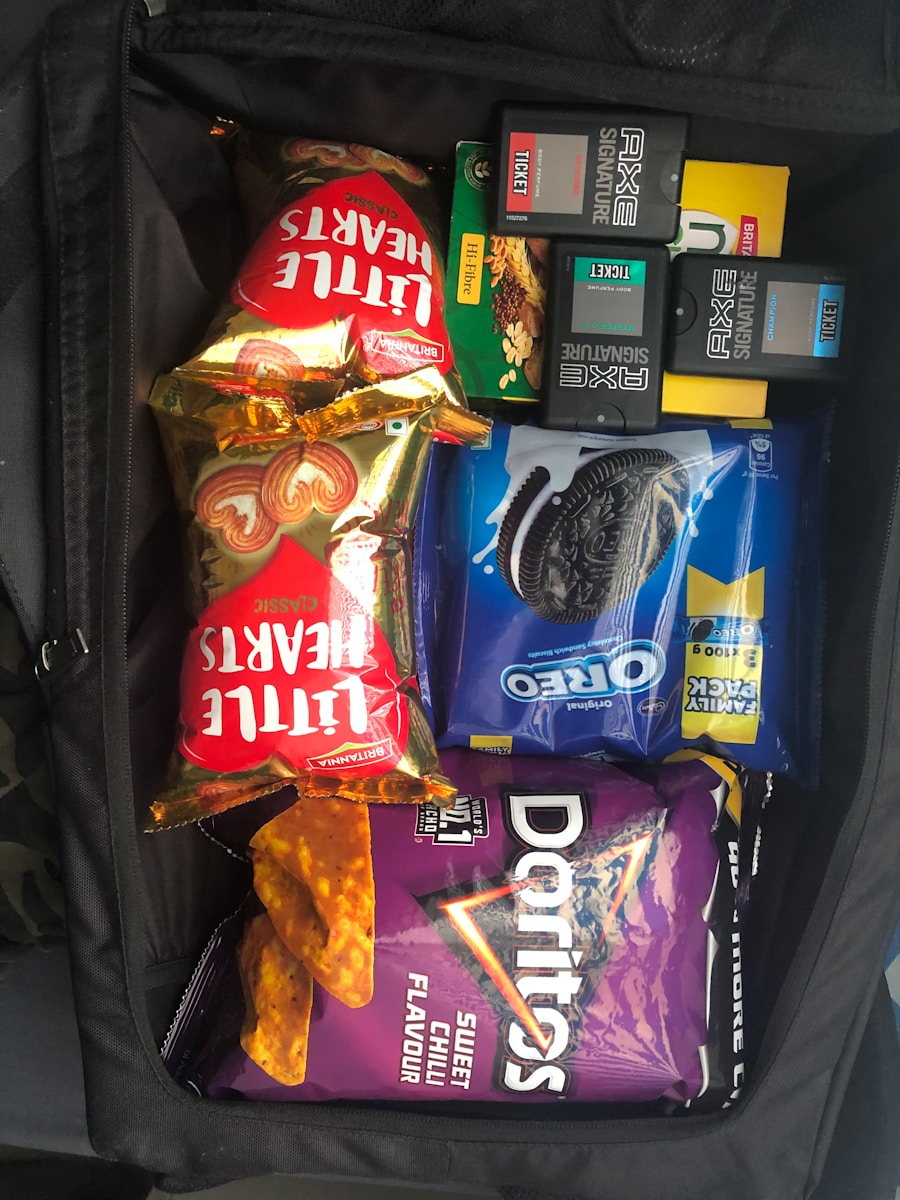Hiking is an exhilarating activity that allows individuals to connect with nature, explore new terrains, and enjoy the great outdoors. However, the physical demands of hiking can be taxing on the body, making it essential to maintain energy levels throughout the journey. This is where hiking snacks come into play.
Proper snacking not only fuels the body but also enhances the overall hiking experience. When you’re traversing rugged trails or climbing steep inclines, having the right snacks on hand can mean the difference between a successful hike and one that leaves you feeling fatigued and drained. Moreover, hiking snacks serve a dual purpose: they provide immediate energy and can also be a source of comfort and enjoyment.
The act of taking a break to enjoy a snack amidst breathtaking scenery can elevate your mood and rejuvenate your spirit. Whether it’s a quick bite during a rest stop or a leisurely snack while soaking in panoramic views, the right food can transform a simple hike into a memorable adventure. Therefore, understanding the importance of hiking snacks is crucial for both novice and seasoned hikers alike.
Key Takeaways
- Hiking snacks are important for providing energy and sustaining endurance during long hikes.
- Nutritional requirements for hiking include a balance of carbohydrates, protein, and healthy fats to fuel the body.
- Portable and lightweight snack options such as nuts, dried fruits, and energy bars are convenient for on-the-go hiking fuel.
- Homemade snack ideas like trail mix, energy balls, and granola bars allow for customization and control over ingredients.
- Pre-packaged snack options like jerky, nut butter packets, and dehydrated fruits offer convenience and variety for hikers.
Nutritional Requirements for Hiking
When planning for a hike, it is vital to consider the nutritional requirements that will support sustained physical activity. Hiking demands energy, which primarily comes from carbohydrates, fats, and proteins. Carbohydrates are particularly important as they provide quick energy that is easily accessible during strenuous activities.
Foods rich in complex carbohydrates, such as whole grains and fruits, can offer sustained energy release, helping hikers maintain their stamina over long distances. In addition to carbohydrates, fats play a significant role in providing long-lasting energy. Foods like nuts and seeds are excellent sources of healthy fats that can keep you fueled during extended hikes.
Proteins are also essential for muscle repair and recovery, especially after challenging climbs or long treks. Including protein-rich snacks such as jerky or protein bars can help replenish your body’s needs after exertion. It’s important to strike a balance among these macronutrients to ensure that your body has the fuel it requires for both immediate energy and longer-term endurance.
Portable and Lightweight Snack Options

When it comes to hiking snacks, portability and weight are critical factors to consider. Hikers often carry their supplies in backpacks, so choosing lightweight options is essential to avoid unnecessary strain. One popular choice is trail mix, which combines nuts, seeds, dried fruits, and sometimes chocolate or granola.
This mix not only provides a good balance of carbohydrates, fats, and proteins but is also easy to pack and carry. The variety of textures and flavors makes trail mix an enjoyable snack that can be customized to suit individual preferences. Another excellent portable option is energy bars.
These bars are specifically designed for active individuals and often contain a blend of oats, nuts, and sweeteners like honey or agave syrup. They are compact and can easily fit into pockets or small compartments in a backpack. Additionally, fruit leathers or dehydrated fruits are lightweight alternatives that offer natural sugars for quick energy boosts.
These snacks are not only easy to carry but also provide essential vitamins and minerals that contribute to overall health during outdoor activities.
Homemade Snack Ideas
| Snack Name | Ingredients | Preparation Time (minutes) | Calories per Serving |
|---|---|---|---|
| Energy Balls | Dates, nuts, cocoa powder, coconut flakes | 15 | 120 |
| Vegetable Sticks with Hummus | Carrots, cucumbers, bell peppers, chickpeas, tahini | 10 | 80 |
| Popcorn with Seasoning | Popcorn kernels, olive oil, nutritional yeast, paprika | 5 | 90 |
| Fruit Salad | Strawberries, blueberries, kiwi, pineapple, mint leaves | 10 | 100 |
Creating homemade snacks for hiking can be both fun and rewarding. Not only do you have control over the ingredients, but you can also tailor them to meet your specific dietary needs and taste preferences. One popular homemade option is energy balls, which can be made by combining oats, nut butter, honey, and various add-ins like chocolate chips or dried fruits.
These no-bake treats are easy to prepare in advance and can be stored in the refrigerator for several days. Another idea is to make your own granola bars. By mixing oats with nuts, seeds, and a binding agent like maple syrup or peanut butter, you can create a nutritious snack that is both filling and delicious.
Baking them in a pan allows you to cut them into convenient sizes for easy packing. Additionally, homemade jerky can be an excellent source of protein for hikers. By marinating lean cuts of meat in spices and dehydrating them, you can create a flavorful snack that is rich in protein and easy to carry on long hikes.
Pre-Packaged Snack Options
For those who prefer convenience or lack the time to prepare homemade snacks, there are numerous pre-packaged options available that cater to hikers’ nutritional needs. Many brands now offer specialized hiking snacks that are designed to provide energy without weighing down your pack. For instance, nut butter packets have gained popularity as they offer a quick source of healthy fats and protein without the need for refrigeration.
Additionally, there are various brands of protein bars that cater specifically to outdoor enthusiasts. These bars often contain a blend of protein sources along with carbohydrates for energy replenishment. Some even include added vitamins and minerals to support overall health during physical activity.
Freeze-dried meals have also become increasingly popular among hikers looking for lightweight yet nutritious options. These meals can be rehydrated with hot water on the trail, providing a hearty option for longer hikes or multi-day trips.
Hydration and Snacking

Here is the rewritten text with 3-4 Hydration on the Trail
The Importance of Replenishing Lost Fluids during physical exertion, the body loses fluids through sweat, making it essential to replenish lost fluids regularly. Dehydration can lead to fatigue, dizziness, and decreased performance on the trail.
Staying Hydrated on the Trail
It’s vital to drink water consistently throughout your hike rather than waiting until you feel thirsty. Incorporating hydrating snacks can also aid in maintaining fluid balance. Fruits with high water content, such as watermelon or oranges, can provide both hydration and energy.
Electrolyte-Rich Snacks for Optimal Hydration
Additionally, electrolyte-rich snacks like coconut water or electrolyte tablets can help replenish lost minerals during strenuous hikes. It’s advisable to plan your hydration strategy alongside your snacking plan to ensure that you remain energized and hydrated throughout your outdoor adventure.
Snack Planning and Preparation
Effective snack planning is key to ensuring that you have the right foods on hand for your hiking trip. Before heading out, consider the duration of your hike and the intensity of the terrain you will encounter. For shorter hikes, lighter snacks may suffice; however, longer treks may require more substantial options to sustain energy levels over time.
Creating a checklist of snacks based on your planned route can help streamline your preparation process. When preparing snacks, consider portion sizes as well. Packing snacks in individual servings can make it easier to grab what you need without rummaging through your backpack.
Using resealable bags or small containers can help keep snacks fresh while also preventing spills or messes in your pack. Additionally, consider the environmental impact of your snack choices; opting for minimal packaging or reusable containers can reduce waste while enjoying nature.
Snacking Etiquette on the Trail
While enjoying snacks on the trail is an integral part of the hiking experience, it’s important to adhere to proper etiquette to ensure a positive experience for everyone involved. First and foremost, be mindful of your surroundings when taking breaks for snacks. If possible, choose designated rest areas or spots away from busy trails where you won’t obstruct other hikers’ paths.
Furthermore, always practice Leave No Trace principles by cleaning up after yourself. This includes packing out any wrappers or leftover food items rather than leaving them behind on the trail. Not only does this help preserve the natural beauty of the environment, but it also protects wildlife from ingesting harmful materials.
Sharing snacks with fellow hikers can also foster camaraderie; however, always ask before offering food to ensure that others are comfortable with sharing. By understanding the importance of hiking snacks and incorporating thoughtful planning into your outdoor adventures, you can enhance both your performance and enjoyment on the trail while respecting nature and fellow hikers alike.
When preparing for a hiking trip, it’s essential to pack the right food to keep you energized throughout the journey. One helpful article to check out is “Best Power Bank for International Travel”, which provides tips on staying charged while on the go. Having a reliable power bank can ensure that you can easily access food-related apps or recipes while hiking to make sure you have the right snacks and meals packed for your adventure.
FAQs
What are the best foods to pack for hiking?
Some of the best foods to pack for hiking include trail mix, nuts, dried fruits, energy bars, jerky, nut butter packets, and dehydrated meals.
How can I ensure my food stays fresh while hiking?
To ensure your food stays fresh while hiking, pack items in airtight containers or resealable bags, and consider using a cooler or insulated lunch bag for perishable items.
What are some lightweight and easy-to-carry food options for hiking?
Some lightweight and easy-to-carry food options for hiking include freeze-dried fruits and vegetables, energy gels, and pre-packaged tuna or chicken pouches.
How can I stay hydrated while hiking?
To stay hydrated while hiking, it’s important to bring plenty of water or a hydration system, and consider packing electrolyte tablets or powder to replenish lost minerals.
Are there any foods to avoid packing for hiking?
Foods to avoid packing for hiking include items that are heavy, perishable, or prone to melting, such as chocolate bars, fresh fruits, and heavy canned goods.
